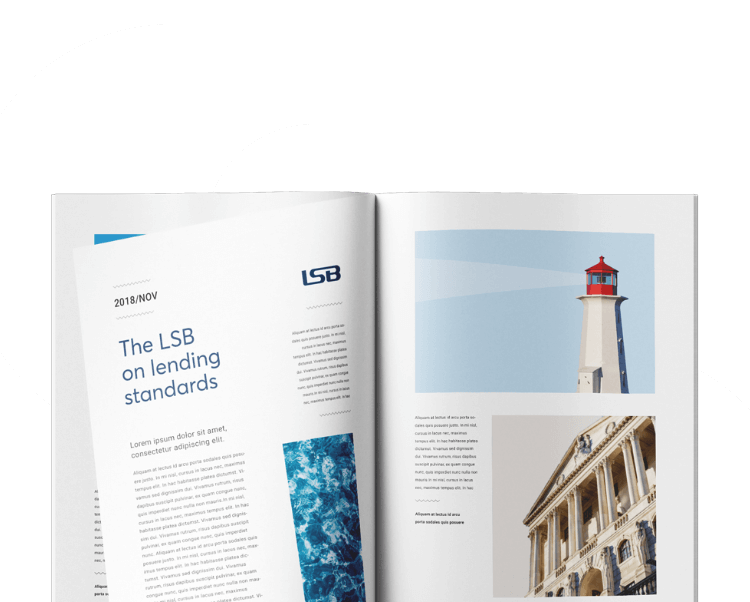Anna Roughley, LSB Head of Insight

When we need to borrow money – for, say, a new car, a holiday, a wedding or an unexpected cost – many of us will head over to a comparison site, or visit the website of a lender that we trust so we can access the best rates possible. Imagine for a moment if your primary thought was not ‘Where can I get the best deal?’, but ‘Where can I communicate in a way that works for me?’ The need to ask this second question is a reality for many – and it’s an automatic barrier to them being able to consider the widest possible range of finance options, and lowers their chances of accessing the best product for their needs.
While digital banking and lending has increased access to finance for many, it’s also true that it just doesn’t work for others. Websites relying on a multitude of plug-ins might be a no-go for someone who relies on a screen reader. There are people who just aren’t comfortable with technology or who can’t afford or can’t use a smartphone. There are some barriers that people without access needs might find surprising: for example, British Sign Language (BSL) doesn’t automatically translate into written English, so people who use BSL as their first language might not be able to understand written web content if a BSL translation isn’t available.
It doesn’t need to be this way.
Over the course of the last 18 months, the LSB has published a series of research papers focused on inclusion. We worked with those with lived experience to understand the barriers they face when accessing finance and how these can be overcome. Earlier this week, we brought together our registered firms to discuss what more can be done to ensure access to finance is truly inclusive.
Blessing Mutamba (Business Inclusion Programme Manager at NatWest), Beth Kume-Holland (CEO and Founder of Patchway Hub), and Rubbena Aurangzeb-Tariq (an expert in Deaf culture and communication) all shared their experience and knowledge on the work they have done to close exclusion gaps and the ways financial services firms can increase inclusion. Across the day, some themes emerged that, if addressed, would go a long way to support inclusive access for everyone, regardless of their specific situations, backgrounds or access needs.
Lived experience – When new services or products are introduced, those behind them may make assumptions and decisions in the design process with the best of intentions – but this can cause issues for the intended audiences or customers when these assumptions and decisions don’t reflect the input from those with ‘lived experience’ of what the designers are trying to address. If this happens when the product is supposed to reach or support under-served communities, it can lead to frustration and greater feelings of ostracization. Collaboration really is key – engaging the services and guidance of those with lived experience, either through lived experience panels or representative organisations, can really turn the inclusive design process around.
Evidencing the size of the issue – Complaints data is one area firms will look at when trying to evidence the size of an issue as part of their business case for change. As a result, we often hear comments from firms like, ‘We don’t receive many complaints about this, so we don’t see this as an area where there’s a problem.’ But, we often hear from representative groups that the inaccessibility of complaints processes is a challenge itself. Sometimes customers can’t make a complaint in a way that works for them (by using BSL, for example), while others may not trust a firm to resolve their complaint so decide not to lodge one. It’s important that firms avoid an over-reliance on complaints data as an indicator of the scale of a problem.
Communicating the change – While digital services can make accessing financial services harder for some people, they can also be used to support greater inclusion and access to finance too – but only when their availability is properly communicated and front-line employees are trained to help customers use them. Innovative support services can be frustratingly inaccessible when they are buried deep within websites, or when customer advisors can’t help customers find or use them.
Inclusion as a forethought – All too often, efforts to ensure a product or service is inclusive can happen partway through a design process (if they happen at all). The incorporation of a standard budget line in project documentation templates for lived experience inclusion advice and support can act as a prompt to ensure lived experience is considered right at the outset of projects. Some firms have a lived experience panel that supports all new and existing product and service design projects.
While there is still much more to be done on inclusion, we have been pleased with the response to our reports, and the efforts being made by firms across the financial services to close the gap for those in underserved communities.
I would like to thank all our registered firms for joining us this week, with a special thanks to Blessing, Beth and Rubbena for their time and insight.
If you would like to find out more about how your organisation can support greater inclusion, you can contact us at insight@lstdb.org.uk.









